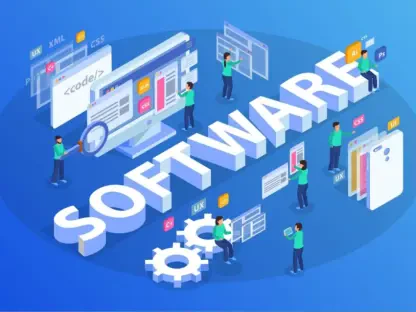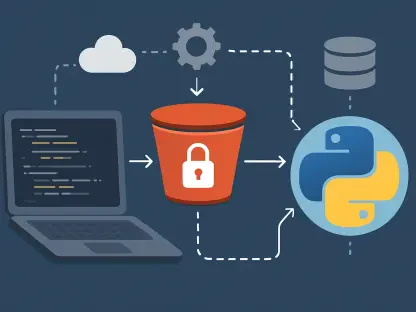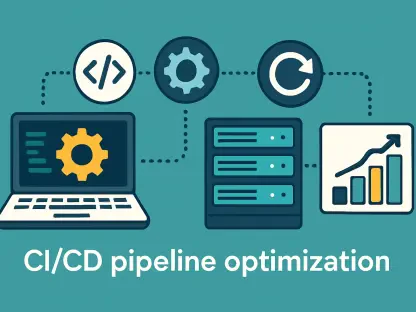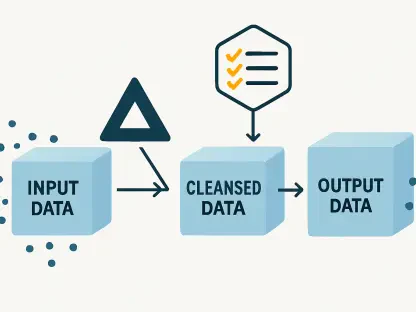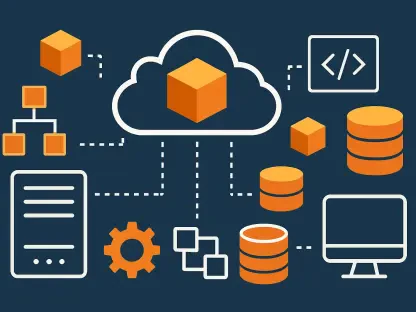In an era where businesses must operate at breakneck speed to stay competitive, the adoption of automation has become a critical strategy for survival and growth. Imagine a company bogged down by repetitive tasks, where employees spend hours on manual data entry or fielding routine customer inquiries, leaving little time for innovation or strategic planning. Automation tools offer a transformative solution, streamlining operations, slashing costs, and enhancing productivity across every department. From handling financial workflows to improving customer interactions, these technologies are no longer just an option but a cornerstone of modern business success. Statistics underscore this urgency: automation is projected to save 30% of hours worked in the US by 2030, while the Business Process Automation (BPA) market is expected to surge to $41.8 billion by 2033. This article explores ten indispensable tools that can elevate efficiency, providing a roadmap for businesses ready to embrace the power of automation and secure a stronger position in today’s dynamic market landscape.
Revolutionizing Productivity with Automation Solutions
Automation stands as a powerful ally in the quest for heightened productivity, taking over mundane, time-intensive tasks that often bog down teams. By delegating activities like invoice processing, task assignments, and data entry to sophisticated software, businesses can achieve productivity gains of up to 30%. These tools not only save time but also significantly reduce the likelihood of human error, ensuring greater accuracy in critical operations. Compliance with industry standards becomes more manageable as automated systems consistently apply rules and protocols without deviation. This shift allows employees to redirect their focus toward high-value initiatives, such as developing new products or crafting innovative marketing strategies, fostering an environment where creativity and strategic thinking can thrive.
Beyond the immediate boost in output, the financial benefits of automation are striking and can reshape a company’s bottom line. Tools designed for specific functions, such as processing invoices, can cut labor costs by as much as 80%, while AI-driven solutions for customer service can halve operational expenses in that domain. These cost savings are not merely short-term wins; they create opportunities for reinvestment into areas like research, development, and employee training. The ripple effect of such savings enhances long-term sustainability, positioning businesses to scale efficiently while maintaining a lean operational model. This financial flexibility is a key driver behind the growing adoption of automation across industries.
Elevating Customer Interactions through Automated Systems
Delivering exceptional customer service in today’s market requires speed, reliability, and accessibility, all of which automation excels at providing. AI-driven chatbots, capable of managing 80% of routine inquiries, offer round-the-clock support, leading to a reported 30% increase in customer satisfaction. These virtual assistants handle everything from basic questions to order updates, ensuring that no customer is left waiting for a response. By automating these interactions, businesses can maintain a high level of service without the need for extensive human intervention, allowing staff to address more complex issues that require a personal touch. This balance ensures a seamless experience for clients while optimizing internal resources.
Another critical aspect of customer-focused automation lies in the use of ticketing systems and automated notifications, which enhance transparency and responsiveness. Ticketing platforms streamline the management of high inquiry volumes, cutting response times by up to 40% and ensuring that no concern goes unaddressed. Meanwhile, automated updates keep customers informed about order statuses or service resolutions, building trust and fostering loyalty. These tools collectively create a customer experience that stands out in competitive markets, turning satisfied clients into repeat buyers and advocates for the brand. The ability to deliver consistent, timely service through automation is a game-changer for any business aiming to strengthen its market position.
Streamlining Financial Operations with Cutting-Edge Tools
Financial operations, often laden with repetitive and error-prone tasks, are a prime candidate for automation, delivering both efficiency and precision. Tools equipped with Optical Character Recognition (OCR) technology revolutionize invoice processing by automating data extraction, reducing errors, and accelerating workflows by as much as 70%. These systems also incorporate AI to flag anomalies and prevent late payments, ensuring compliance with financial regulations. By minimizing manual input, businesses can maintain accurate records and avoid costly mistakes, creating a more robust financial framework that supports overall operational health.
Integration with existing financial systems further amplifies the value of these automation tools, enabling real-time tracking of transactions and payments. This connectivity speeds up payment cycles, which can strengthen relationships with vendors by ensuring timely settlements. The resulting reduction in labor costs—often by up to 80%—frees up significant resources that can be redirected toward strategic investments. For businesses looking to optimize cash flow and maintain a competitive edge, adopting financial automation is not just a smart move but a necessary one. The seamless handling of financial tasks through these tools lays a solid foundation for sustained growth and fiscal stability.
Transforming Customer Support with Speed and Cost Efficiency
Customer support automation redefines how businesses manage interactions, balancing speed with cost savings to deliver superior service. Advanced ticketing systems efficiently handle large volumes of inquiries, slashing response times by 40% and ensuring that customer issues are addressed promptly. These platforms prioritize and categorize requests, directing them to the appropriate resolution channels without delay. Such efficiency not only improves service quality but also reduces the workload on support teams, allowing them to focus on intricate cases that demand specialized attention.
AI chatbots complement these systems by tackling routine queries with remarkable effectiveness, cutting operational costs by 50% in customer service departments. Available 24/7, these tools provide instant responses to common questions, maintaining a consistent level of support regardless of time or day. This cost-effective approach does not compromise on quality; instead, it enhances the customer journey by minimizing wait times and ensuring accessibility. Businesses adopting these solutions can achieve a dual benefit of reduced expenses and elevated client satisfaction, positioning themselves as responsive and customer-centric in an increasingly demanding marketplace.
Driving Growth through Sales and Marketing Automation
Sales and marketing efforts gain a significant edge through automation, enabling businesses to reach wider audiences with precision and efficiency. Platforms that automate lead management and multi-channel campaigns can boost engagement rates by an impressive 200%, connecting with potential customers across various touchpoints. These tools streamline repetitive tasks like email follow-ups and social media postings, freeing up marketing teams to focus on crafting compelling strategies that resonate with target demographics. The result is a more impactful presence in the market without a proportional increase in effort or cost.
Personalization, powered by data analytics, takes these efforts further by tailoring campaigns to individual preferences, driving conversion rates up by 50%. Automation also reduces the cost of repetitive marketing tasks by 25%, providing a financial advantage that can be reinvested into creative initiatives. Additionally, AI-enhanced forecasting tools improve sales strategy accuracy by 15%, helping teams anticipate trends and adjust approaches accordingly. For businesses aiming to scale their outreach and maximize returns, integrating sales and marketing automation is a strategic imperative that aligns with modern consumer expectations and market dynamics.
Optimizing Inventory and Project Management with Automation
Inventory management benefits immensely from automation, ensuring that stock levels are maintained with precision to avoid costly disruptions. Real-time monitoring tools track inventory across multiple locations, preventing stockouts or overstocking by providing instant visibility into supply chains. Automated reordering alerts, triggered by sales trends, ensure timely replenishment, reducing discrepancies by 30%. This level of control not only enhances operational efficiency but also minimizes losses from unsold inventory or missed sales opportunities, creating a more agile and responsive business model.
Project management automation, on the other hand, transforms how teams collaborate and deliver outcomes, with software tools increasing productivity by 25%. Features like Gantt charts and Kanban boards simplify task assignments and progress tracking, ensuring that deadlines are met and resources are allocated effectively. Real-time reporting provides actionable insights, enabling managers to address bottlenecks before they escalate. By integrating with other systems, these tools eliminate manual data entry, further streamlining workflows. Businesses leveraging such automation can complete projects faster and within budget, maintaining a competitive edge in project-driven industries.
Simplifying Human Resources with Automated Processes
Human Resources departments find automation to be a powerful tool in managing complex, time-consuming processes with ease and accuracy. Solutions that automate onboarding, payroll, and timekeeping reduce the time-to-hire by 40%, allowing companies to bring talent on board swiftly. These systems ensure payroll accuracy, minimizing errors that could lead to compliance issues or employee dissatisfaction. By handling administrative burdens efficiently, HR automation enables staff to focus on talent development and workplace culture, which are vital for long-term organizational success.
The financial impact of HR automation is equally compelling, with a potential return on investment of 300% in the first year of implementation. Self-service portals further enhance the employee experience by providing easy access to personal data, schedules, and benefits information, boosting engagement and satisfaction. These tools reduce the need for constant HR intervention, cutting operational costs while maintaining a high standard of support. For businesses seeking to optimize workforce management, adopting automated HR solutions offers a clear path to efficiency, cost savings, and improved employee relations, all of which contribute to a stronger, more cohesive organization.
Building for the Future with Scalable and Data-Driven Tools
Selecting automation tools that can scale with business growth is essential for maintaining efficiency over the long term. Scalable solutions adapt to increasing demands without compromising performance, ensuring that systems remain effective as operations expand. Seamless integration with existing platforms is equally critical, as it prevents data silos and maintains a unified workflow across departments. Businesses must prioritize tools with robust security features to protect sensitive information, alongside strong support systems to address any challenges during implementation or upgrades.
Data-driven insights provided by automation tools are another cornerstone of strategic success, offering real-time visibility into operational performance. Advanced analytics enable quicker, more informed decision-making by highlighting inefficiencies and identifying opportunities for improvement. Whether monitoring inventory trends or evaluating project timelines, these insights keep businesses agile, allowing them to pivot in response to market shifts. By investing in automation platforms that combine scalability with powerful analytics, companies can future-proof their operations, ensuring they remain competitive in an ever-evolving landscape driven by technological advancements.
Reflecting on Automation’s Transformative Impact
Looking back, the journey of integrating automation into business operations reveals a profound shift in how efficiency is achieved across various functions. Tools spanning financial management, customer support, sales, marketing, inventory, project management, and human resources demonstrate their capacity to elevate productivity, trim expenses, and enhance client experiences. The adoption of these technologies marks a turning point, as businesses harness AI and data analytics to refine their processes, achieving results that manual efforts could seldom match. Each tool, with its unique strengths, plays a pivotal role in reshaping operational landscapes, proving that strategic automation is indispensable for staying ahead.
Moving forward, the focus should shift to continuous evaluation and adaptation of these tools to meet evolving needs. Businesses are encouraged to regularly assess the performance of their automation systems, seeking updates or new solutions that align with emerging trends and challenges. Investing in employee training to maximize tool utilization can further amplify benefits, ensuring that technology and human expertise work in tandem. By maintaining a proactive stance on automation, companies can build resilient frameworks that not only sustain current efficiencies but also pave the way for innovation and growth in the years ahead.


